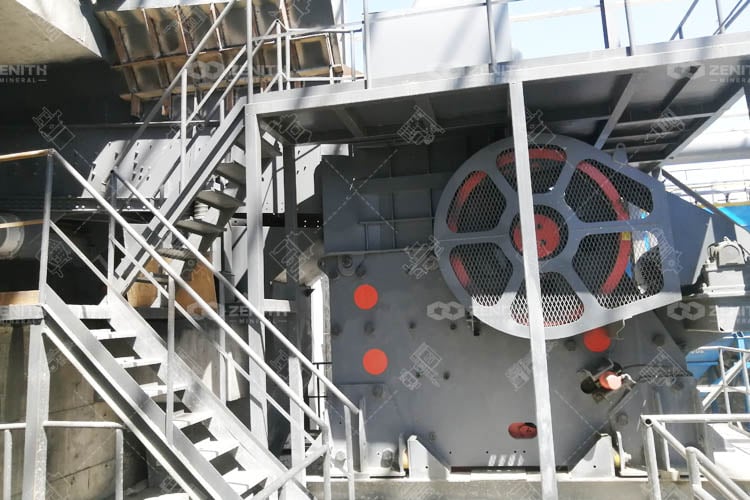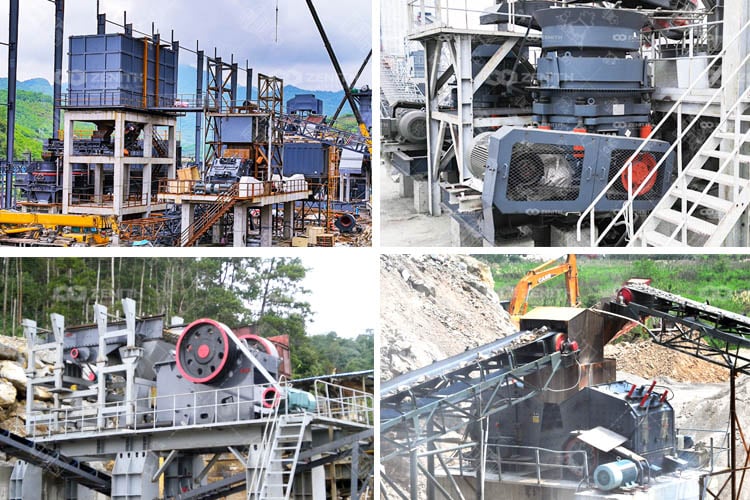Marble is a metamorphic rock composed primarily of calcite and dolomite, known for its aesthetic appeal and durability. Marble, a versatile and highly sought-after natural stone, has a wide range of applications, from construction and interior design to sculptural and ornamental uses. Consequently, the efficient and cost-effective processing of marble has become a crucial aspect of the mining and quarrying industry.

The marble crushing process is a multi-stage operation that aims to transform raw, extracted marble blocks into a variety of usable end-products, such as aggregates, powders, and specialized materials. This process typically involves the following key stages:
The marble crushing process begins with the extraction of raw marble blocks from quarries or deposits. These blocks are then transported to the processing plant, where they undergo primary crushing. This initial stage involves the use of heavy-duty equipment, such as jaw crushers or gyratory crushers, to reduce the large marble blocks into smaller, more manageable sizes, typically ranging from 500 to 750 millimeters in diameter.

The crushed marble from the primary stage is then fed into secondary crushing equipment, such as cone crushers or impact crushers, to further reduce the particle size. This secondary crushing stage is often accompanied by a screening process, where the crushed material is separated into different size fractions using vibrating screens or other screening devices. These size-graded fractions can then be directed to various processing streams or stockpiled for further downstream processing.
Depending on the desired end-products, the size-graded marble fractions may undergo additional crushing and grinding stages. Tertiary crushers, such as high-pressure grinding rolls (HPGR) or sand making machine, can further reduce the particle size to produce finer aggregates or powders. In some cases, ball mills or roller mills are employed to grind the marble into even finer powders, suitable for applications like fillers, coatings, or specialized industrial uses.
After the crushing and grinding stages, the processed marble may undergo various separation and beneficiation processes to remove impurities, upgrade the purity, or produce specialized products. These processes can include gravity separation, magnetic separation, or froth flotation, depending on the specific characteristics of the marble and the desired end-products.
The final stage of the marble crushing and processing plant involves drying the processed material, sizing it to the required specifications, and packaging it for transportation and distribution. Rotary dryers, vibrating screens, and bagging or bulk loading systems are commonly used in this stage to ensure the final products meet the industry standards and customer requirements.
The success of a marble crushing and processing plant is largely dependent on the selection and integration of the appropriate equipment. Each stage of the process requires specialized machinery designed to handle the unique properties and characteristics of marble. Let's explore the key equipment components and the factors to consider when selecting them:
As mentioned earlier, the primary crushing stage typically involves jaw crushers or gyratory crushers. These robust machines are designed to handle the large, coarse marble blocks and reduce them to smaller, more manageable sizes. When selecting primary crushers, factors like feed size, throughput capacity, energy efficiency, and maintenance requirements should be carefully evaluated.
The secondary and tertiary crushing stages employ a variety of equipment, such as cone crushers, impact crushers. These machines are responsible for further reducing the particle size and shaping the marble fragments to meet the desired specifications. Crusher selection should consider factors like feed size, output gradation, power consumption, and wear characteristics.
Vibrating screens are commonly used in the marble processing plant to separate the crushed material into different size fractions. The efficiency and accuracy of these screening systems can have a significant impact on the overall product quality and process yield. Additionally, specialized separation equipment, like gravity separation tables or magnetic separators, may be integrated to remove impurities or upgrade the purity of the marble.
For applications that require finer marble powders or specialized products, ball mills, roller mills, and vertical roller mills can be employed in the grinding stage. These machines use mechanical energy to further reduce the particle size and produce the desired fineness. The selection of grinding equipment should consider factors like feed size, product fineness, energy consumption, and maintenance requirements.
To ensure the smooth and efficient operation of the marble processing plant, a range of auxiliary equipment and material handling systems are often integrated. These can include conveyor belts, bucket elevators, silos, stockpilers, and loaders, among others. The design and integration of these supporting systems can significantly impact the overall productivity, efficiency, and cost-effectiveness of the plant.
When selecting the appropriate equipment for a marble crushing and processing plant, it is essential to consider factors such as the characteristics of the raw marble material, the desired end-products, the production capacity, and the overall process flow. Engaging with experienced equipment manufacturers and engineering firms can help mining operators make informed decisions and ensure the optimal configuration of the plant.
In addition to the selection of appropriate equipment, the overall cost-efficiency of a marble crushing and processing plant can be further enhanced through the implementation of various strategies and best practices. Let's explore some key areas of focus:
Careful process design and optimization can significantly improve the overall efficiency and cost-effectiveness of the marble crushing plant. This may involve the integration of dynamic process control systems, real-time monitoring, and advanced data analytics to identify and address bottlenecks, optimize resource utilization, and minimize waste.
Marble crushing and processing operations are inherently energy-intensive, with the crushing and grinding stages being the major energy consumers. By selecting energy-efficient equipment, implementing waste heat recovery systems, and optimizing the plant's energy management, mining companies can significantly reduce their operational costs and environmental impact.
Establishing a comprehensive maintenance program, including predictive and preventive maintenance strategies, can help ensure the long-term reliability and cost-effectiveness of the marble crushing plant. This can involve the implementation of condition monitoring systems, the strategic stocking of critical spare parts, and the implementation of total productive maintenance (TPM) practices.
Adopting sustainable practices within the marble processing plant can contribute to overall cost savings and environmental stewardship. This can include the implementation of water recycling systems, the utilization of waste marble fines for alternative products, and the optimization of material handling to minimize losses and spillages.
Fostering a culture of continuous improvement and embracing technological innovations can help mining companies stay ahead of the curve and maintain a competitive edge. This may involve the implementation of lean manufacturing principles, the adoption of Industry 4.0 technologies, and the proactive engagement with research and development initiatives to identify new opportunities for process optimization and cost reduction.
By addressing these key areas of focus, marble mining and processing companies can enhance the overall cost-efficiency of their operations, ultimately improving their profitability and competitiveness in the market.
The establishment of a successful and cost-effective marble crushing and processing plant requires a comprehensive understanding of the equipment, processes, and strategies involved. From the primary crushing of raw marble blocks to the production of specialized end-products, each stage of the operation plays a crucial role in determining the overall efficiency and profitability of the plant.

we will delve into the intricacies of stone crusher performance optimization, examining the critical factors that must be considered to ensure these machines operate at the peak of their capabilities.

we will delve into the intriguing world of silica sand, uncovering its origins, uncovering its diverse applications, and examining the innovative ways in which this shimmering treasure is shaping the future of our built environment.

In Nigeria, Stone crushing is an important part in mining industry and require high quality stone crushing machines.
Fill your requirements here, and we'll send the custmized solution and quotation to you by the reserved contact information.